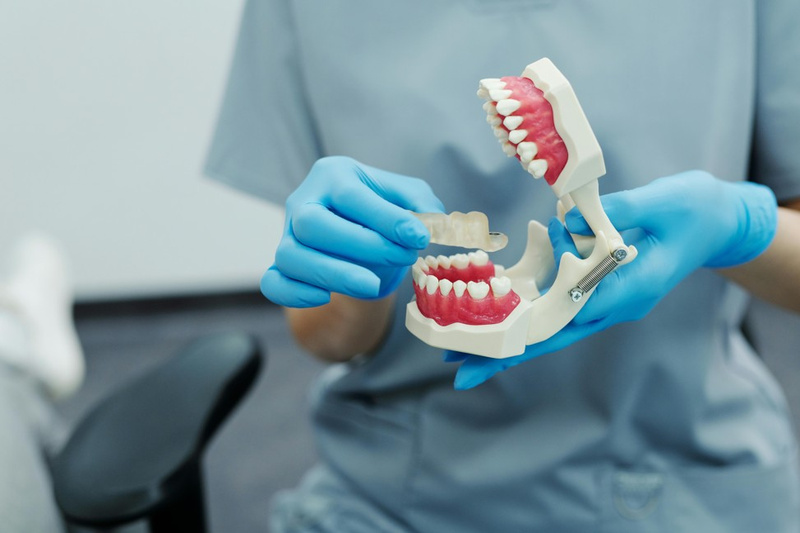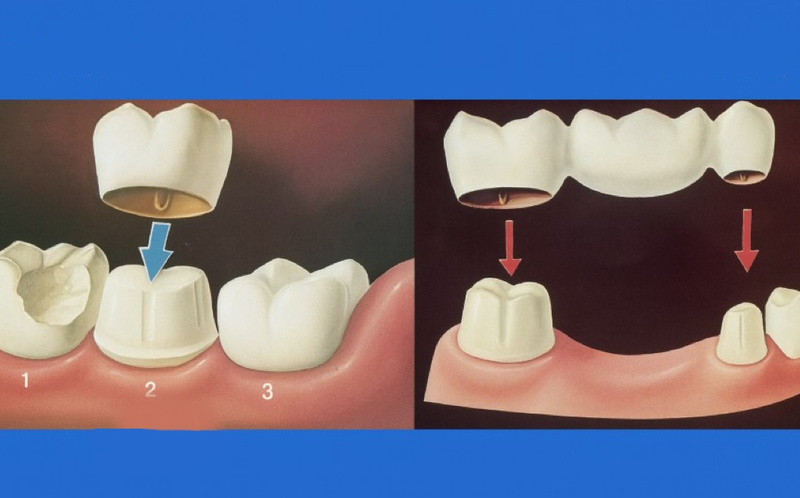
When you lose or damage a tooth, it can affect more than just how your smile looks. Chewing, speaking, and your overall oral health can all suffer. That’s why restorative dental treatments like crowns and bridges are often recommended. But which one is better? The answer depends on your individual needs, the condition of your teeth, and the long-term outcome you’re aiming for.
In this blog, we’ll explain the difference between a dental crown and a dental bridge, the benefits of each, and how to choose the right option to restore your smile.
What Is a Dental Crown?
A dental crown is essentially a cap that fits over a damaged or weakened tooth. It restores the tooth’s shape, size, and strength while also improving its appearance. Crowns are commonly used after root canal treatment, to protect cracked or broken teeth, or to cover teeth with large fillings.
Crowns can be made from a range of materials, including porcelain, ceramic, metal, or a combination of both. They are designed to blend in naturally with your existing teeth and are cemented into place permanently.
When Might You Need a Crown?
- To protect a tooth after root canal therapy
- To cover a tooth that is cracked or worn
- To restore a broken or decayed tooth
- To support a tooth with a large filling
- To improve the appearance of a misshapen or discoloured tooth
- As part of a dental implant restoration
What Is a Dental Bridge?
A dental bridge is used to replace one or more missing teeth. It’s made up of one or more false teeth, known as pontics, that are held in place by crowns attached to the teeth on either side of the gap.
Bridges can be fixed (cemented in place) or removable, but fixed options are more common and durable. Like crowns, bridges can be made from porcelain, metal, or a combination of materials.
When Might You Need a Bridge?
- If you’ve lost one or more teeth in the same area
- If the teeth next to the gap are strong enough to support crowns
- When you want a non-removable option to fill the space
- To prevent your remaining teeth from shifting out of place
- To restore chewing ability and speech clarity
What Are the Main Differences Between Crowns and Bridges?

Crowns vs Bridges: The key difference lies in their purpose. A crown is used to repair and protect a single damaged tooth. A bridge, on the other hand, is used to fill the space left by missing teeth. A bridge usually includes crowns as part of its structure, but it also includes false teeth.
Crowns are often used on teeth that are still present but weakened. Bridges are only used when at least one tooth is missing.
Advantages of Dental Crowns
- Restore the natural look and function of a tooth
- Durable and long-lasting with proper care
- Can be colour-matched to your natural teeth
- Strengthen a weakened or heavily filled tooth
- Protect a tooth following a root canal
Disadvantages of Dental Crowns
- Require some reshaping of the natural tooth
- Can be more costly depending on the material used
- May need replacement after many years due to wear or decay underneath
Advantages of Dental Bridges
- Fill the gap left by one or more missing teeth
- Prevent other teeth from shifting
- Restore bite function and aesthetics
- Fixed in place and don’t need to be removed like dentures
- Often faster than implants in terms of treatment time
Disadvantages of Dental Bridges
- Require the adjacent teeth to be filed down for crowns
- Can put extra pressure on supporting teeth
- May not last as long as implants, especially with poor oral hygiene
- Harder to clean under the false tooth compared to natural teeth
What About Dental Implants?
While bridges and crowns are effective, dental implants are another modern solution worth considering. Implants replace both the root and the visible part of a missing tooth, offering excellent durability and function.
However, implants require surgery, a longer healing time, and may not be suitable for everyone. They are also generally more expensive, which is why crowns and bridges remain popular alternatives.
How to Choose Between a Crown and a Bridge

Choosing the right treatment depends on several factors, including:
- How many teeth are missing
- The health of the surrounding teeth and gums
- Your age and general oral health
- Your budget and the time you’re willing to commit
- Whether you’re looking for a temporary or permanent solution
If you have one damaged tooth that needs strengthening, a crown is usually the best option. If you have one or more missing teeth and want to fill the gap, a bridge may be more suitable.
Your dentist will carry out a thorough examination and take X-rays to help decide the best treatment for your situation.
How Long Do Crowns and Bridges Last?
With good oral hygiene and regular dental check-ups with The Dental Practice UK, crowns and bridges can last for many years. On average:
- Crowns last between 10 and 15 years, sometimes longer
- Bridges typically last 5 to 15 years
Factors that affect their lifespan include the material used, how well they’re cared for, and whether you grind your teeth or have other habits that could cause wear and tear.
Caring for Crowns and Bridges
Both crowns and bridges require the same care as natural teeth:
- Brush twice a day with a fluoride toothpaste
- Use floss or interdental brushes to clean around the crown or bridge
- Avoid chewing hard items like ice or pens
- Attend regular dental check-ups and hygiene appointments
- Consider using a night guard if you grind your teeth
Even though they are artificial, the underlying tooth or gums can still develop problems if not properly looked after.
Final Thoughts
Both crowns and bridges offer reliable ways to restore your smile, improve function, and protect your oral health. A crown is ideal when you have a damaged but still present tooth, while a bridge is the go-to solution for filling the space left by missing teeth.
There’s no one-size-fits-all answer. The right option depends on your dental needs, your lifestyle, and what you’re hoping to achieve. Speaking to your dentist is the best way to understand what will work for you and ensure long-term success.
Restoring your smile doesn’t just boost your confidence; it maintains the health and structure of your mouth for years to come.
